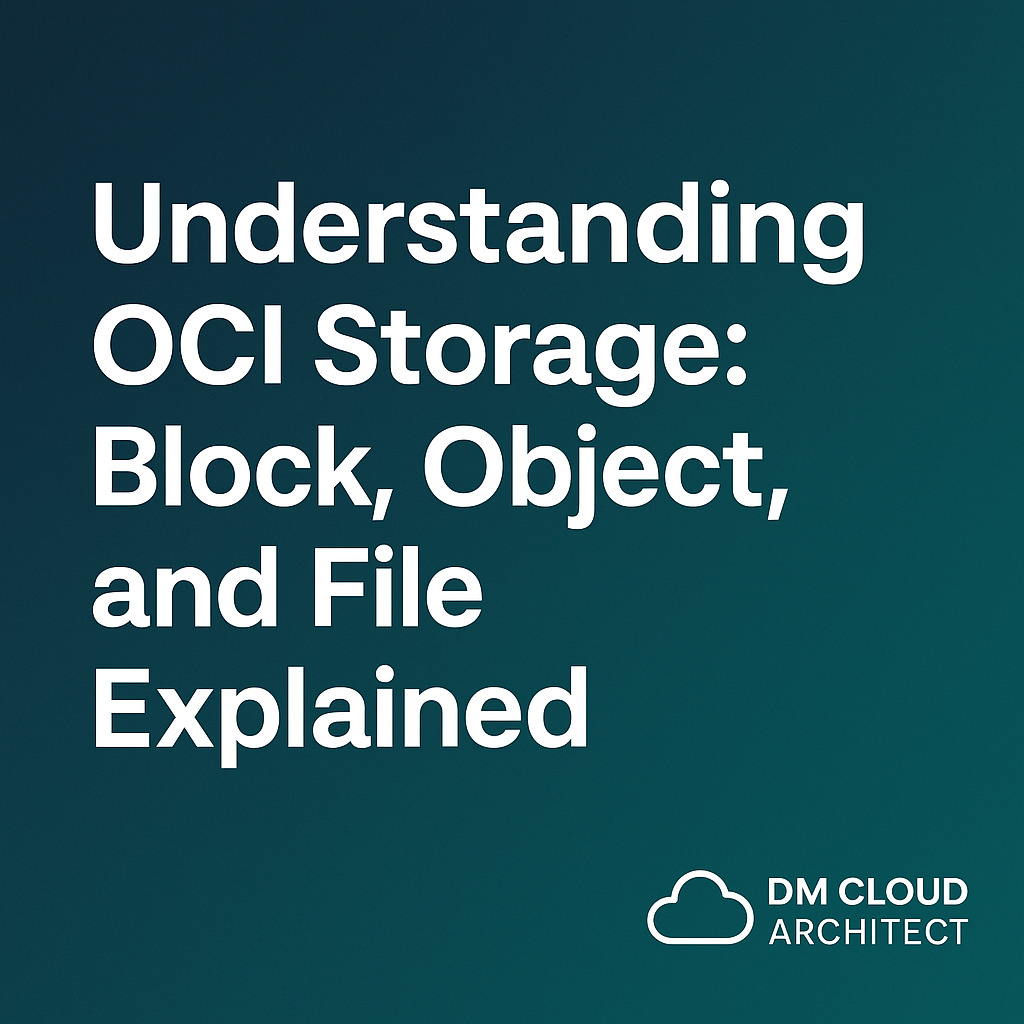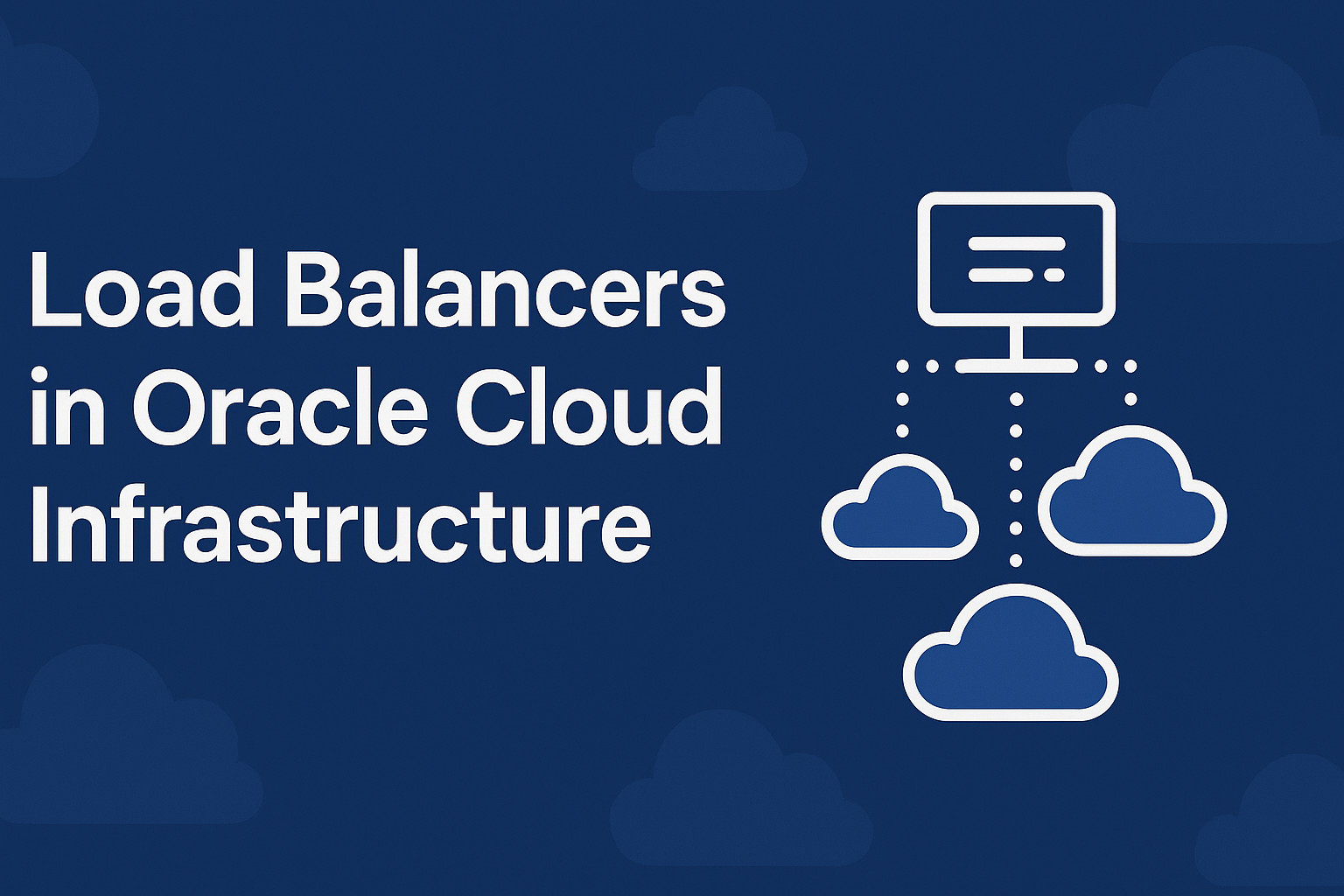Introduction
In Oracle Cloud Infrastructure (OCI), storage is more than just a place to hold data — it defines how your workloads perform, scale, and recover. Whether you’re hosting web apps, running analytics, or storing backups, choosing the right storage type is key to balancing performance, cost, and reliability.
The Three Main Types of OCI Storage
OCI offers three distinct storage classes: Block Storage, Object Storage, and File Storage. Each fits a specific use case.
1. Block Storage – High Performance and Flexibility
Block volumes act like traditional hard drives attached to compute instances.
They support both HDD and SSD performance tiers, can be resized without downtime, and offer replica-based durability within the same availability domain.
-
Ideal for: Databases, boot volumes, and transactional systems
-
Tip: Attach multiple block volumes to the same instance for parallel I/O
2. Object Storage – Secure and Infinite Scale
Object Storage is designed for unstructured data such as backups, logs, images, and media.
It’s highly durable, encrypted by default, and accessible via APIs, SDKs, or CLI.
-
Ideal for: Backups, archives, analytics data
-
Supports Standard (frequent access) and Archive (cold data) tiers
-
Bonus: Automate lifecycle rules to move data to lower-cost tiers
3. File Storage – Shared and Scalable NFS
OCI File Storage provides a fully managed, scalable file system over NFS.
It’s great for applications that require shared access, such as web servers or clustered workloads.
-
Ideal for: Multi-instance applications and content management systems
-
Supports snapshots and encryption at rest
Performance and Best Practices
-
Use Block Storage for low-latency applications
-
Use Object Storage for cost-efficient backup and media delivery
-
Use File Storage for shared data between compute nodes
-
Always enable replication and snapshots for disaster recovery
Conclusion
Selecting the right storage type in OCI ensures your applications stay fast, resilient, and cost-effective. Start small, measure performance, and scale intelligently.
Downlaod 7 OCI Mistakes to Avoid



